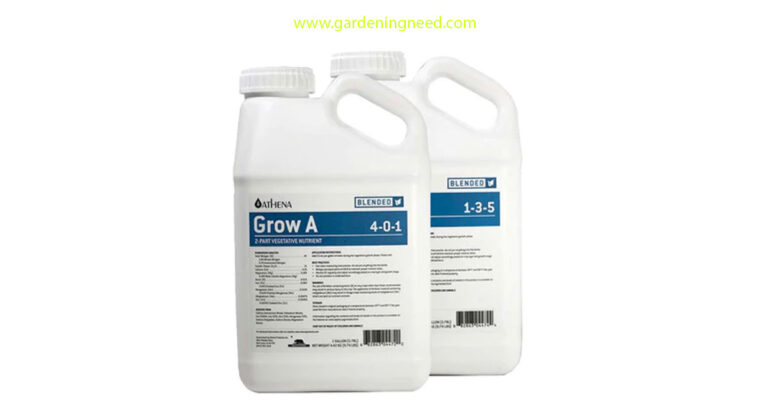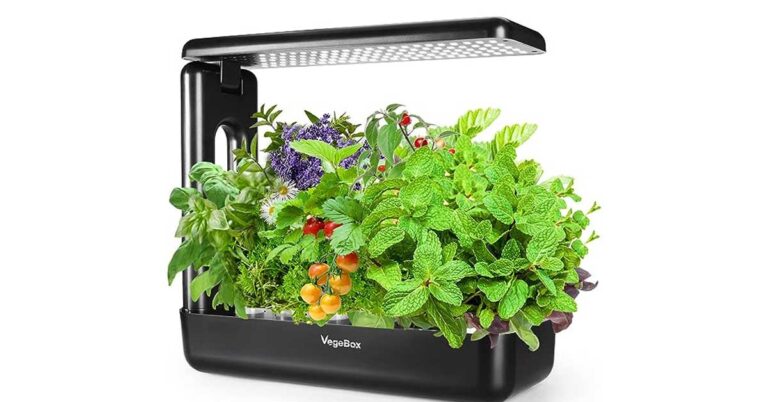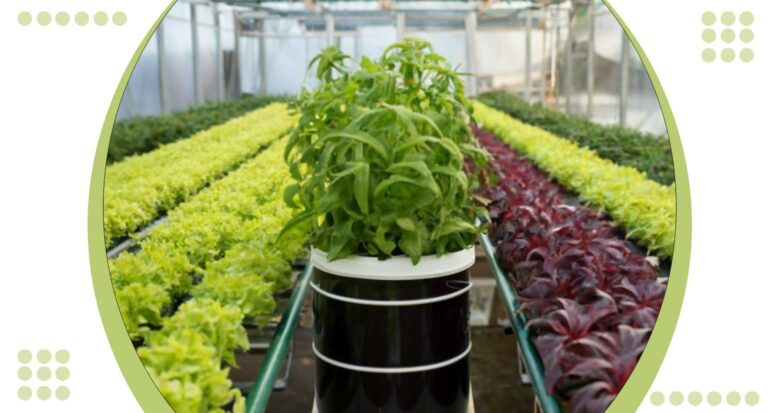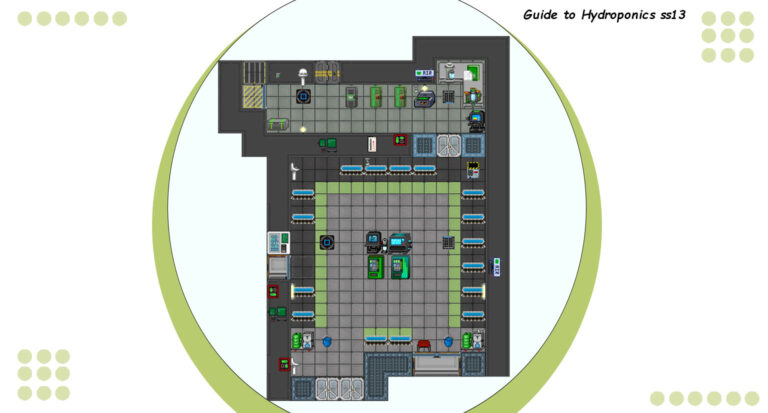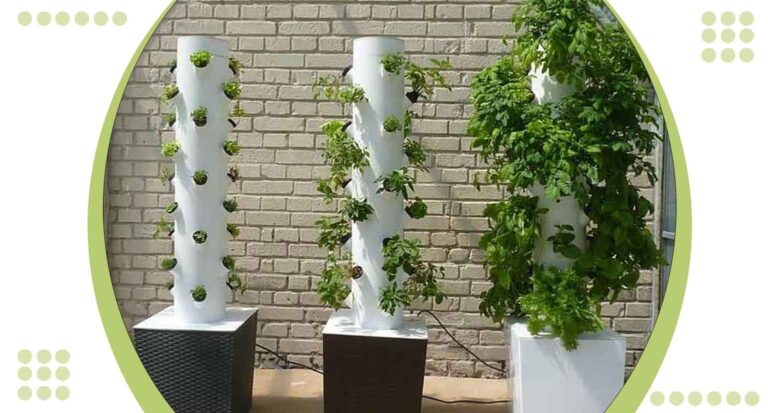Microbe Life Hydroponics
In the ever-expanding world of modern gardening, microbe life hydroponics stands as a breakthrough that redefines the way plants grow. No longer bound by traditional soil-based methods, this revolutionary approach utilizes beneficial microbes to enhance nutrient absorption, fostering robust growth and vitality in plants.
By harnessing the power of microorganisms in a controlled environment, microbe life hydroponics unlocks untapped potential in plant development, offering a sustainable and efficient method that’s becoming increasingly popular in urban farming and commercial cultivation. Whether you’re a hobby gardener, a farming enthusiast, or a commercial grower, understanding the fundamentals of this unique method can pave the way for flourishing plant life.
Join us as we delve into the world of microbe life hydroponics, exploring its benefits, applications, and the innovations that make it a cornerstone for modern agriculture. Experience growth like never before, as we unveil the secrets of this dynamic and promising field.
Introducing the Basics of Hydroponics and Microbe Life
When it comes to plant growth, hydroponics and microbe life are two vital components that intertwine to create a thriving ecosystem. But what exactly are these terms, and how do they fit into the context of modern agriculture?
Hydroponics: This term refers to the method of growing plants without soil, using nutrient-rich water solutions instead. By precisely controlling the nutrients and environment, hydroponics allows for faster growth and healthier plants.
Microbe Life: Within the hydroponic system, microbe life plays a critical role. Microorganisms such as bacteria, fungi, and algae actively participate in nutrient cycling, enhancing the nutrient absorption process and contributing to plant health.
Combining Hydroponics and Microbe Life: When these two concepts come together, they create a symbiotic relationship that’s central to microbe life hydroponics. This fusion paves the way for advanced growth techniques, sustainability, and the promotion of stronger, more resilient plants.
As we move forward, understanding these basics will lay the groundwork for exploring the full range of opportunities microbe life hydroponics offers. Whether you’re new to this field or looking to optimize your current practices, this guide is designed to help you grasp the essential concepts that form the foundation of this innovative approach to gardening and agriculture.
The Benefits of Using Microbes to Grow Plants
The introduction of microbes into the growing process is not just a trend but a scientific method that brings numerous advantages to plant growth and health. Here’s a glimpse into the myriad benefits that microbe life hydroponics offer:
1. Enhanced Nutrient Absorption: Microbes form a symbiotic relationship with plant roots, increasing the efficiency of nutrient uptake. This boosts growth rates and enhances the overall vitality of the plants.
2. Improved Soil Structure: In soil-based applications, beneficial microbes enhance soil fertility, texture, and structure, making it more conducive for plant growth.
3. Natural Disease Resistance: Microbe life in hydroponic systems can help in building natural defense mechanisms, making plants more resistant to diseases and pests.
4. Environmental Sustainability: Utilizing microbes reduces the need for chemical fertilizers, promoting a more sustainable and eco-friendly approach to agriculture.
5. Customizable Growth Environment: Microbe life hydroponics allows growers to tailor the ecosystem to the specific needs of different plant species, ensuring optimal growth conditions.
6. Increased Yield: With improved nutrient absorption and a controlled environment, microbe life hydroponics often leads to higher yields compared to conventional growing methods.
7. Cost-Efficiency: Over time, the use of beneficial microbes can reduce the need for expensive fertilizers and pesticides, leading to a more cost-effective growing process.
Microbe life hydroponics isn’t just a method; it’s a philosophy that brings science and nature together in harmony. By understanding and leveraging the relationship between microbes and plants, growers can unlock a world of possibilities, leading to healthier plants, increased yields, and a more sustainable future for agriculture. This blend of tradition and innovation is redefining how we think about growing, offering new opportunities and benefits that were once beyond reach.
Understanding How Hydroponics Works
Hydroponics, a cornerstone of modern agriculture, has redefined the way we grow plants by utilizing nutrient-rich water solutions rather than traditional soil. But how does this revolutionary method work, and what makes it so effective? Here’s a comprehensive look at the underlying mechanics of hydroponics:
1. Nutrient Solution: At the heart of hydroponics lies a nutrient-rich water solution containing all the essential minerals and elements that plants require. This replaces the soil, providing the plants with everything they need to grow.
2. Different Growing Systems: Hydroponics can be implemented through various systems, including Nutrient Film Technique (NFT), Deep Water Culture (DWC), Aeroponics, and more. Each system has unique characteristics and is suitable for different types of plants.
3. Root Support: Since there’s no soil to anchor the roots, hydroponic systems use mediums like coco coir, perlite, or rock wool to provide support and stability to the plant roots.
4. Controlled Environment: Hydroponics allows for meticulous control over factors like temperature, humidity, light, and pH levels. This precise control ensures optimal growing conditions.
5. Integration with Microbe Life: The fusion of hydroponics with beneficial microbes creates microbe life hydroponics, a system that leverages the natural relationships between microorganisms and plants for even more successful growth.
6. Scalability: Whether you’re growing herbs on your windowsill or running a commercial greenhouse, hydroponics offers scalability to fit various needs and spaces.
7. Sustainability: By recirculating water and nutrients, hydroponics is often more resource-efficient than traditional farming methods, contributing to sustainable practices.
The science behind hydroponics may seem complex, but its principles are rooted in simple, effective practices that prioritize the needs of the plants. By understanding these basics, growers can optimize their systems, ensuring healthy, robust plants that thrive in a controlled, soil-free environment. From hobbyists to professional farmers, hydroponics opens up a world of possibilities, heralding a new era in agriculture that aligns with modern needs and environmental responsibilities.
Choosing the Right Equipment and Supplies for Your Hydroponic Environment
Creating a successful hydroponic environment requires careful selection of the right equipment and supplies. Whether you’re building a microbe life hydroponics system for home use or a large-scale commercial operation, here’s a comprehensive guide to help you make informed choices:
1. Selecting a Hydroponic System: Choose a system that aligns with your goals and space. Options include Deep Water Culture (DWC), Nutrient Film Technique (NFT), Aeroponics, and more. Understand the needs of your plants and your available space to select the right system.
2. Nutrient Solutions: The lifeblood of any hydroponic system, nutrient solutions must be carefully balanced to provide all essential elements. Consider pre-mixed solutions or create your custom blend to match the specific needs of your plants.
3. Grow Mediums: Selecting the right medium like coco coir, perlite, or rock wool is vital for supporting the roots and ensuring proper water and nutrient absorption.
4. Lighting: From LED to HID lights, choose the appropriate lighting that fits your plants’ needs and growth stages, considering factors such as light spectrum, intensity, and energy efficiency.
5. Pumps and Irrigation: Ensure a consistent flow of nutrients with quality pumps and irrigation systems designed for the specific requirements of your chosen hydroponic method.
6. Environmental Controls: Invest in equipment to control temperature, humidity, and ventilation. Automation can simplify these tasks, maintaining optimal conditions around the clock.
7. Introducing Beneficial Microbes: In microbe life hydroponics, incorporating the right microorganisms can enhance nutrient uptake and plant health. Select products designed to foster beneficial microbial activity.
8. Monitoring Tools: pH meters, EC meters, and other monitoring devices enable you to keep a close eye on your system’s health, making necessary adjustments promptly.
9. Safety and Maintenance: Consider the safety equipment and regular maintenance tools to ensure that your system runs smoothly and securely.
With the right equipment and supplies, microbe life hydroponics can transform the way you grow plants, yielding bountiful harvests and robust growth. It’s a blend of science, innovation, and attentiveness to detail that makes this method so rewarding. By carefully selecting and integrating these components, you can create a thriving hydroponic environment that aligns with your specific needs, budget, and goals, taking your growing endeavors to unprecedented heights.
Preparing a Healthy Hydroponic Environment for Optimal Plant Growth
The success of a microbe life hydroponic system is contingent on creating and maintaining a healthy environment tailored to the plants’ specific needs. This preparation goes beyond merely selecting the right equipment and involves a harmonious blend of various factors. Here’s how to cultivate a thriving hydroponic environment for optimal plant growth:
1. Analyzing Plant Requirements: Understanding the specific needs of the plants you intend to grow is paramount. Research their preferred pH levels, nutrient requirements, temperature, and lighting conditions to create a suitable environment.
2. Balancing Nutrient Solutions: Crafting the perfect nutrient solution involves a delicate balance of essential elements. Regular testing and adjustments will ensure that the plants receive exactly what they need for robust growth.
3. Introducing Beneficial Microbes: In microbe life hydroponics, selecting and introducing the right microorganisms can significantly enhance nutrient uptake and foster a healthier root system.
4. Monitoring and Controlling Environmental Conditions: Implementing tools to constantly monitor and control factors like temperature, humidity, and light ensures that the plants remain in their optimal growth conditions.
5. Choosing the Right Grow Medium: Selecting a medium that aligns with your chosen hydroponic system and your plants’ needs provides crucial support and aids in nutrient absorption.
6. Ensuring Proper Lighting: Adjusting lighting to match the growth stages and needs of your plants plays a vital role in photosynthesis and overall development.
7. Regular Cleaning and Maintenance: Keeping the system clean and well-maintained prevents the buildup of harmful pathogens and ensures that everything runs smoothly.
8. Avoiding Overcrowding: Proper spacing between plants allows for sufficient airflow and prevents competition for nutrients, leading to healthier, more uniform growth.
9. Implementing Pest and Disease Management: Implementing preventive measures and regularly inspecting for signs of pests and diseases helps in maintaining a healthy environment.
10. Being Responsive to Changes: A successful hydroponic gardener remains attentive to their plants, ready to respond to any visible signs of stress or imbalance.
By meticulously preparing and maintaining a healthy hydroponic environment, growers can ensure that their plants flourish, reaping the rewards of their hard work and attention to detail. Microbe life hydroponics stands as a testament to what’s achievable with the right knowledge, tools, and dedication, offering a rewarding and sustainable approach to modern gardening and agriculture. Join the revolution and experience the remarkable benefits that this method has to offer.
Adding the Right Nutrients to Your Hydroponic System For Maximum Efficiency
In microbe life hydroponics, nutrient selection and management are pivotal to achieving maximum efficiency and plant growth. Unlike traditional soil-based cultivation, hydroponics requires a direct infusion of nutrients into the water system, demanding precision and understanding. Here’s a comprehensive guide to help you add the right nutrients to your hydroponic system:
1. Understanding Nutrient Essentials: Plants require a balance of macronutrients (such as nitrogen, phosphorus, potassium) and micronutrients (like calcium, magnesium, iron). Familiarize yourself with these essentials to create a nutrient-rich solution.
2. Choosing Pre-Mixed Solutions or Custom Blends: Depending on your expertise and plant needs, you may opt for pre-mixed nutrient solutions or create your custom blend tailored to your plants’ specific requirements.
3. Monitoring pH Levels: Maintaining the correct pH level ensures that the nutrients remain available to the plants. Regular monitoring and adjustments are crucial to keeping the pH within the optimal range.
4. Integrating Beneficial Microbes: Microbe life hydroponics takes nutrient management to the next level by incorporating beneficial microbes that enhance nutrient absorption, adding efficiency to the process.
5. Understanding Growth Stages: Different stages of plant growth demand different nutrient concentrations. Adapting the nutrient solution to match the growth stages ensures that the plants receive what they need when they need it.
6. Regular Testing and Adjustment: Frequent testing of the nutrient solution helps in identifying any deficiencies or imbalances. Prompt adjustments maintain the health and efficiency of the system.
7. Avoiding Nutrient Lockout: Nutrient lockout occurs when imbalances prevent nutrient absorption. Careful management and understanding of nutrient relationships can prevent this issue.
8. Reusing and Recycling Nutrients: Some hydroponic systems allow for the recirculation of nutrient solutions, offering a more sustainable approach. Regular testing ensures that the recirculated solution remains effective.
9. Ensuring Compatibility with Your System: Different hydroponic systems may require specific nutrient formulations or delivery methods. Make sure your chosen nutrients are compatible with your system for the best results.
10. Following Manufacturer Guidelines: If using commercial nutrient products, adhere to the manufacturer’s guidelines for the best results and to avoid potential issues.
Adding the right nutrients to your hydroponic system is a blend of art and science, requiring attention to detail, understanding of plant needs, and the willingness to make regular adjustments. By focusing on these aspects, you can optimize your microbe life hydroponic system for maximum efficiency, promoting robust growth, and reaping the benefits of this innovative approach to gardening and farming. Join the growing community of hydroponic enthusiasts and unlock the full potential of your plants with the right nutrient management practices.
Conclusion
Microbe life hydroponics represents a significant advancement in the world of agriculture, offering a sustainable and efficient method for growing plants without the traditional soil medium. Through understanding the basics of hydroponics, recognizing the numerous benefits of incorporating microbes, choosing the right equipment, preparing a healthy environment, and adding the correct nutrients, growers can harness the true potential of this innovative system.
The integration of beneficial microbes enhances the relationship between plants and nutrients, leading to healthier growth and higher yields. From the selection of the hydroponic system to the careful management of environmental conditions, each aspect requires meticulous planning and execution.
As we’ve explored in this comprehensive guide, the success of microbe life hydroponics lies in the details. Whether you’re a hobbyist eager to explore new gardening horizons or a commercial grower looking to optimize production, microbe life hydroponics offers a path filled with opportunities.
In a world increasingly focused on sustainability, efficiency, and innovative agricultural practices, microbe life hydroponics stands as a testament to human ingenuity and the power of nature working in harmony. By embracing this approach, growers are not only nurturing plants but also cultivating a brighter future for agriculture. Join this exciting journey, and discover how microbe life hydroponics can transform your growing experience. The future of agriculture awaits, and it’s teeming with life.


